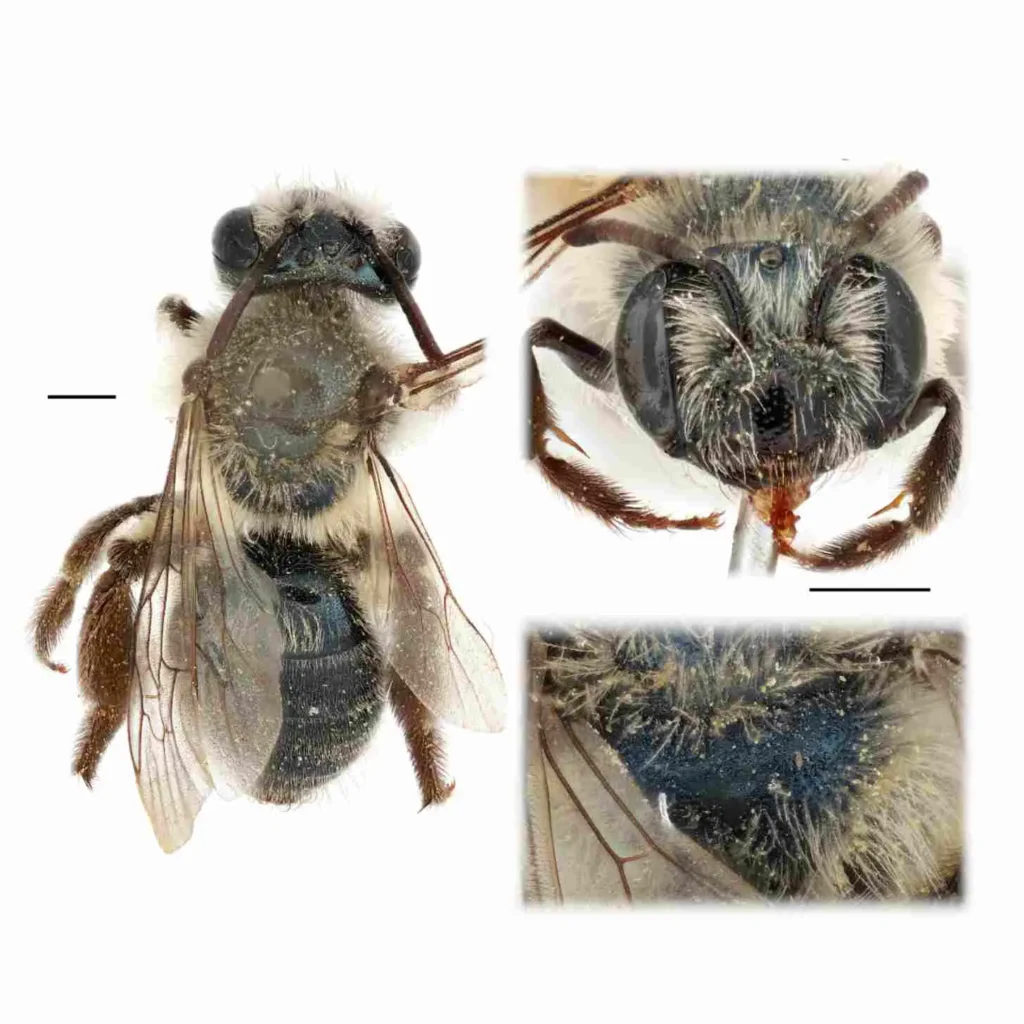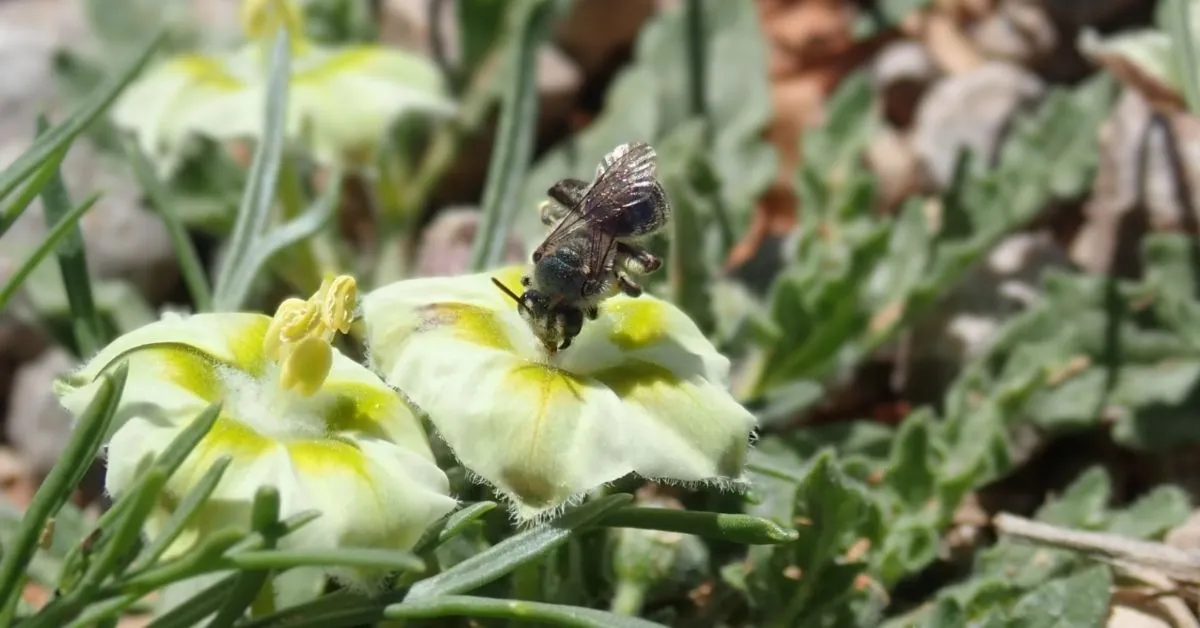Since the “Save the Bees” movement gained widespread attention in the 1990s, researchers have made remarkable progress in protecting at-risk bee species — uncovering some surprising discoveries along the way.
Among newly documented honeybees, leaf-cutting bees, and ground-nesting bees, one standout member of the miner bee family has captivated scientists: the Andrena androfovea.
This dazzling, metallic blue-green species has earned the playful nickname “eyeliner boy” for a very distinctive reason.

In a study published in Ecology and Evolution, scientists at the University of Oklahoma detailed the bee’s genome, behavior, and preferred flowers. In an interview with the Texas Standard, co-author James Hung explained that although the species was first spotted decades ago, it took over 30 years to compile sufficient data and officially introduce it into scientific literature.
“Dr. Jack Neff, the senior author of this study and a longtime Texas bee expert, was the first to notice this species before the year 2000,” Hung shared. “It wasn’t until much later that we pieced together its place within the Andrena genus and its unique life history.”
Hung, a biology professor at the University of Oklahoma, emphasized two unique traits of this “little blue bee,” which is native to Texas and Oklahoma.
“First, males of this species have foveae—fuzzy structures inside each eye that resemble eyeliner,” Hung noted. “These foveae seem to function similarly to human eyeliner, signaling attractiveness to potential mates.”
What truly sets Andrena androfovea apart, though, is that male Andrena bees rarely exhibit such foveae, which are more common among females. This inspired the species name “androfovea,” combining the Greek word for “male” with the anatomical term. Hung joked that a modern slang version of its name might translate to “eyeliner boy.”
Another fascinating feature of Andrena androfovea is its specialized pollen-collecting behavior. “These bees exclusively collect pollen from a few plants in the nightshade family,” Hung explained.
While many animals avoid nightshade plants due to their toxicity, certain insects, including specific bees and butterflies, can pollinate these flowers without harm. Within the Andrena genus, Andrena androfovea is unique for this dietary preference.
“With around 1,500 to 1,700 Andrena species globally, we’ve found no other species that specializes in pollen from nightshade plants,” Hung added. “This behavior represents a significant evolutionary adaptation.”
Discoveries like Andrena androfovea highlight the critical role bees play in sustaining ecosystems. Despite their small size, miner bees, including this newly identified species, significantly impact the environment by aiding in cross-pollination and improving soil health through their burrowing activities.
Hung celebrated the addition of this sparkling blue species to the scientific record and reflected on the broader implications of such discoveries. Quoting Senegalese conservationist Baba Dioum, Hung said, “We protect what we love, and we love what we know.”
“There are countless species still waiting to be discovered,” he noted. “Only by studying and documenting them can we deepen our understanding of how nature supports life on Earth.”
